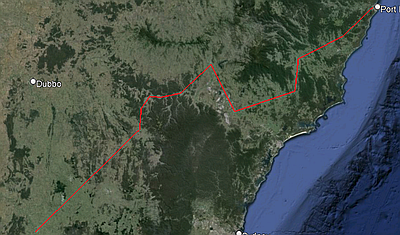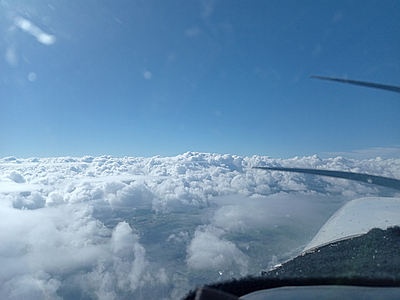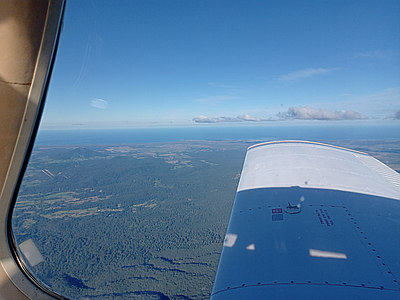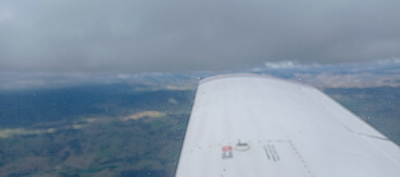-
Posts
3,461 -
Joined
-
Last visited
-
Days Won
47
Content Type
Profiles
Forums
Gallery
Downloads
Blogs
Events
Store
Aircraft
Resources
Tutorials
Articles
Classifieds
Movies
Books
Community Map
Quizzes
Videos Directory
Everything posted by RFguy
-
why such a large difference between approach speed and landing speed ? (240/150kts) ?
-
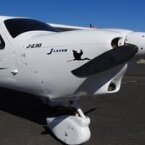
uAvionix tailBeacon Anomalies
RFguy replied to kiwiaviator's topic in Instruments, Radios and Electronics
Maybe the blanking logic doesnt work or something, but I'd expect the blanking isnt connected etc, or blanking signals not compatible.. Uavionix seem to know what they're doing, having had direct conversations with their chief of engineering. -

uAvionix tailBeacon Anomalies
RFguy replied to kiwiaviator's topic in Instruments, Radios and Electronics
yeah, but naa but the same error may apply with the logic. -

uAvionix tailBeacon Anomalies
RFguy replied to kiwiaviator's topic in Instruments, Radios and Electronics
hmm because they retained their old transponder and didnt wire up the blanking wire to the transponder ????? -

The risk of dying doing what we love
RFguy replied to Freizeitpilot's topic in Student Pilot & Further Learning
Referring to the original post with the illustration/graph What happens if you do : GA, motorcycles, diving, MTBing and rock climbing ? Do the probabilities all add up ? Note I have not done any rock climbing for 20 years. Well I'm not going to die in my plane. Biggest danger is distraction by a passenger these days . -
cool. I've got the bigger winged 180A (still Hershey Bar - Archer 1 ) compared to straight 180hp cherokee. I'll be particularly interested whether holding off putting out the 25 flap until 45 kts does anything for ops on SWS....
-
Note Bosi, the J230 doesnt have the granuality of performance data like the J160. The J160 was a VH registerable airplane (not sure how with the electrical system design) , and had the P-charts that you provided for the forum. Still, there's enough data in the J230 book to extrapolate, together with empirically obtained data - see below - One of the things I am going to do soon is, with the Piper, do a few SF TO runs on the grass at Cowra (which can get very grassy between rain and cutting cycles) , with someone observing the precise TO point, to get some better empirical data on how long it takes my plane to get airplane with particular techniques used. In reality, KA would never have known exactly how much extra TO drag there would be, it might have looked like dry short grass from above. That's the reason why the other day I visited Camden Haven by foot, to check out exactly what sort of surface I would be in for. (next to the river, in the shade all winter- it was slow)
-
Yeah, BUT - you dont know exactly how soft and how wet - it is not a fixed parameter. I ithink on some soft wet surface (SWS) I have encountered, I'd add 50%, not 7% to the TO roll......
-
GREAT decision KiwiAV ! you live another day. A good pilot makes decisions in advance and is not overly optimistic. And great that you actually STOPPED when you got to your abort decision point. Many wouldn't. they'd be overly optimistic. I had this experience in a mate's jabiru down on some lake flats. took a long time to get airborne, used up 800m... Has anyone landed at Camden Haven, NSW? when I went to Port last week, I drive down to that ALA and it's in the shade all winter and about 30cm above lake level... was quite soft . not sure I'd get the Piper out of there comfortably , needs to dry out in summer (but then, higher temps... )
-
CTAFs being too common. gahhhh. When you are in circuit at Cowra, you share CTAF with Parkes, Forbes, Young, Cootamundra.. and others. If i need to make a call 'now' and there is someone talking on the radio 50-100nm away , I just transmit over the top ......... I dont wait. The locals over there 50-100nm away will here that aircraft , and locals where I am , will hear me. I've made my complaints that Cowra is in the centre of 5 other CTAFs and needs to move. Turbs, I liked what you said, "Another way of saying this is: "If you're aware of traffic in the area it might be safer to add additional traffic-specific communication." and I will preach to others- you've come up with a good way to describe the variation . Given that I never join on base, my joining calls are always downwind (with approx position, like "Early downwind"), or, joining midfield Xwind. And if I have to overfly the circuit on the hot side into the cold side to do a steep descending 180deg turn (on the dead side) then join midfield Xwind, I'll make sure everyone knows my intentions and position with an additional call-- just in case someone else is climbing on the downwind after TO , or also joining midfield xwind from the other side.... Lot's of potential conflicts !
-
flying into Cowra on Tuesday. nothing going on ....although I know a few trainers are out on navs because we all left together an hour back. .... ....10 mile call, then just before join, I glance at the tablet , cant see any aircraft...... then I decide to have a look around, it seems too quiet..... before I press PTT for circuit join call.......... and FFS...... I see a Warrior coming towards me mid field cross wind same altitude. No calls. golly, so it is useful to lookout the windows !...... I ask for identification/intentions and it all gets sorted out. he went #1, I #2, but then I lost him (sight) late downwind. where has that aircraft gone ????? now I get more concerned... I call turning base. I eventually pick him up coming turning final , he must have done really deep downwind. That's fine. Lots of trainers in the air at Cowra, you really DO need to keep a good eye out because circuit adherence is a bit hit and miss, as are radio work. expected. people are learning. There are times in the training intake cycle (6 weeks -3 mo) where its pretty hazardous , where students are just flying their first circuits in dual, and circuits and radio work is all over the shop. I think they (training co) , at times, let their students have a bit too much rope, not enough attention by the hour building young instructors, IMO.... But it's a double edged sword I know between too much intervention , and not enough..... ( by the instructor) I gather this is the same elsewhere, where there are intensive training ops (6-12 aircraft in the air) in the vicinity. I try to have some airmanship influence when I can, by, example, by offering to other students (waiting) holding short or following if they want to back-track with me, or want me to extend etc... trying to show how to all get on and accomodate eachother . I think the minimalise casa calls" is completely horsesh1t. Calls should be made whenever required or conducive to avoiding airspace conflicts.
-
which radio calls to make on approach..... That depends on the situation. 1) The below are not always my rules, but I ask myself- "what should-could I say that is useful, to assist another pilot " ? 2) Additional calls beyond minimum 10 mile and joining - make those extra calls concise and quick. Minimum air traffic. a) Even if NOTHING is happening minimum 10 mile call and joining circuit call. where ever that it is. b) other aircraft approaching and joining - additional calls to resolve potential conflict early ---- - position(approx bearing NW/W etc , distance, altitude) when a couple of miles out just before joining, and turning base or turning final. c) an aircraft waiting to take off , or backtracking etc- provide them some extra info , is late downwind, turning base call , maybe a turning final call etc. Not too much though !. When entering/ holding short - even if I know roughly where at aircraft is, I'll ask for other aircraft position if I have any doubts. d) 5 aircraft in circuit (not uncommon at cowra - calls are usually base turning crosswind, late downwind, turning base leg, turning final leg ). e) sometimes, radio is busy when you might otherwise make a turning call.....so in that case, its reasonabl to mention which leg.... IE : just "DRF is base, Cowra" if the radio was busy at the time you were turning base. Downwind calls should have an additional word (early, mid (or abeam RWY) , and late) . Aircraft on RWY can be seen by aircraft in circuit, so no extra call required by those ACFT except entering RWY etc in those cases. Sometimes an aircraft is waiting waiting waiting holding short to get out. If you are feeling generous and there isnt anyone behind you to screw up their approach, I will tell that waiting aircraft I will extend my downwind and slow down a bit to give them some time to get out (and do it regardless whether they said yes please or no, because I have to assume that they heard or think I will be extending my downwind. turning (leg) calls are useful because it pins your position in another pilots mind (and helps them know where to look) glen
-
Turbs you've hot the nail on the head with "but I've never seen an Instructor come on here and say "This is easy, I should be able to get you through that in x hours." That's really what needs to happen. The person is already competent on the radio, talking to Centre, etc, it is really a very small extra step I believe to run the radio procedures. But it does need the pilot to have good recency - fly regularly, use radio regularly, be used to all the chatter on Centre for it all to run smoothly. If the pilot in training cant deal with a bit of extra workload and radio work they they probably should not be in CTA.
-
WT. To get CTA access would require doing a CTA endorsement. This requires instruction and a flying test. To get an RPL, that's a couple of hours for a flying test in a Cherokee, plus the above CTA instruction which *could* be done at the same time. If you've had your RAAus-XC for a while, you know how to talk on the radio, and talk to Center. C is easy. D you need to know local procedures, so I guess the test is about looking up procedures (and if you comply!). I'm guessing there is a case where there isn't easily a GA aircraft available to do this, Although in an area where there is a class C or a class D, there's surely a busy enough aerodrome that there would be GA instruction and aircraft available. But in support of RAA-aus options- Really , the CTA endorsement should be able to be done in any aircraft that has the minimum equipment.
-
usually with the simple ones, the SCR turns on at start of half cycle, and turns off at the end of the half cycle. no noise. If it turned off or on during the cycle, IE when there was voltage there, that would create noise because of the instantaneous step current.
-
hundreds of times per second. each time there is a stator pole pulse . Usually an electronic component called an SCR is used which gets turned on by the regulator, and turns off by itself at the end of the pole pulse.
-
Good choice Kiwi . My NZ glider mates tell me that that east coast run is not fun with a westerly blowing, either. If you don't like wind and turb in NZ, you might not fly much. and sfGnome , .,. yes I feel the same way, I'll stay out of my airplane for a couple of weeks . It's not scary, it's just no fun. Maybe its like having a 3 hour colonoscopy or something.
-
NO, they do not. They do not regulate " (field windings) on a permanent magnet jobby. " Permanent magnet alternators do NOT have field windings ! That's the whole point. Volts in the form of pulses come out of permanent mag alternators whether you want them or not. Permanent magnet alternator regulators have two choices 1) Turn on or off the control device so that more or less of the pulses are passed to the battery. In the case where the battery is full and there is no load, the regulator will be turned off, disconnecting the stator windings from the load (battery) 2) Diversion - (short) load the stator windings. In this case, if the battery is full (no load) , the regulator will place a short across the windings (with load disconnected) . Max current will flow in the windings. IE the power is diverted through the regulator away from the load (battery) (1) is most common.
-
There's an enormous contrast flying east from Cowra, and flying west. Flying west is hot but there's nothing around, and usually not much moisture. maybe the odd gusty change, and hazardous willy willy near the ground. But flying east... Death is everywhere, rocks in clouds, low ceilings, rising ground, unforgivable terrain , wind and eddys, lots of moisture, and the oceanic effects colliding with the westerlies from the other direction.... I'm sure every region has similarities and can catch people.....The far north Queensland coast and hinterland comes to mind. Who else has their story of this ?
-
Hi Nev yeah I watched for that with temps hovering around +1 just below the cloud ~ 4k-5k .. ....It certainly causes a rethink of just enjoying flying in one's local region, just to enjoy flying like a bird or , doing long trips that inevitably may suffer bad weather over days and days of the same forecast (that was this case) . I was prepared to turn around and head back anytime, the pinch being Rylstone region. I see there is also an option of going around the top at Gulgong and following the main road. That's all a bit lower, and a bit further north, all helps. The technically difficult nature is one of the things that draws me to flying. A hard task outside my electronics world. I studied the hell out of that route, got lots of info from others , plane prep-ed. But curiosity can also kill the cat. again I think it comes down to being open to turn around or change plan no matter how inconvenient. , and recognising a potentially hazardous scenario unfolding. My 19,000 hour instructor, Rob Glenn, is full of anecdotes and real world examples or things that can happen.
-
Cowra to Port Macquarie, ( 8 June ) PA28-180. 1 on board. heading up to see some mates and ham radio field day. Never done this route and I have no experience as PIC over to the coast beyond Rylstone. I called up a few locals and got some tips. The GAF was full to the brim with MOD TURB, OVC, DZ, SHSN, BKN ST etc etc FZLVL 5000 Every other long flight I've done the GAF has been empty. Plan was to head up to Rystone cross the gap there, to scone, around north of Barrington and direct to PMQ Got airborne at noonish, fog, low cloud. Took off with no cloud overhead. Went up to have a look . Uh oh, 10 minutes in .... 7500. this really isnt good. This is about to be a problem. Time to dive under that cloud before it becomes a problem. down we go . ceiling 4500. ground ~ 2000. This cloud is not just a bit thick, it's dense and dark. fly along around 1000-1500 above terrain avoiding forested areas where I cant land since at 1500' ,with engine fail, a little over a minute and I am on the ground. 20+ kts tailwind .. bumpy. slowed down to 95-100kts indicated. still 130 with tail wind 🙂 get to Rystone, never flown up here.... bit of training activity going on. head east for a short time then. oh oh (again) . looks like I will have 500' between extremely rugged terrain and the cloud. this looks hazardous. My survival is unlikely if I go in there and have any problem at all. I see a way through this as I can see a a settled valley to the north over a ridge and that valley leads into the hunter valley. looks good. but it will be another one of those engine idle dives to ensure I have plenty of margin around the cloud. I have a quick chat with the locals on CTAF for their suggestions. they concur . Turn left left backwards, back track a bit and head north over the a narrow ridge (which I could descend into farmload either side if trouble ) with 500' in hand on cloud base..... and into the cleared basin on the other side(that's the first northern change in the track above ) this ridgeline is tangental to path, so there is absolutely minimum time getting over it. plenty of engine fail options. Fly along the Bylong Valley Way (and railway from coast to Ulan Coal) ... pick my way around treed areas. Now into the top of the hunter valley .... Not bad via- ceiling 4000, ground ~ 2000' . bumpy. 15 kts tail. very bumpy. still < 100 kts IAS , bumpy Get to Scone , still heading north east....... having a good look, contemplate my direct track north of Barrington Tops.... No F**king way am I going up there ! geezus it looks bad. So, next diversion...... turn right toward Singleton, down the new england highway,,,,,slow right down to 90 kts to give myself some time to figure this out before I hit CTA , no answer on freqs in OZ runways for WIlly Delivery, so look up all the freqs in the ERSA ...... frantically thumb through the ERSA reading up Williamtown procedures and frequencies . all sorted. After listening to ATIS, I get a class C clearance from Singleton to Stroud Road ,intersecting partially up the inland VFR route (railway) . Very nice people at Willy Centre. get a height change to get over the bumps a bit. Nice being watching and cared for in Class C, people shouldnt be scared of it. Then, let off the Class C leash into the valley route. bumpy 2500. get out the top end at Gloucester , cloud clears like magic and nice almost , and then sort of direct to Port from there. tailwind almost gone. Descend into Port midfield X wind 21, into a busy circuit, 4 other planes. no probs. nice touchdown. RETURN, Monday noon. There was LESS overall moisture, cloud ceiling about 5000 and OVC, just not as thick, more like ST than ST CU But the wind. Took off out of Port into 25 kts at 5000. bumpy as hell. wing rollers and uncomfortable turb. Decide go back same way I came up, almost.... it works. Get into Inland route valley. Oh the turb is awful. This valley flying with a wind across the valley is terrible . this is just the pits. This is not fun. slow to ~ 100 kts (95kts ground since wind is currently off my right wing to the west) Get a Class C clearance at Stroud Road again, head to Muswellbrook. nice people again on Willy centre. Now WTF? ! HSI going to 500-750 fpm, up.. Oh now down -500 fpm, and again Mountain Wave ! oh this is NOT FUN. still flying slow at 95-102 kts (80 ground) . 1 hour of this. Brisbane Centre is full of RPT aircraft trying different altitudes to get away from the turb , LOL interesting, a chunk of misty air would go past and simultaneous I'd get a big jolt and roll. not fun. Just south of scone. lots of training going on. Head to back to Bylong, bumpy.... on Bylong Valley Way, cloud getting lower, thicker as I get to the pitch point. Wind a bit better though, I think I'm somehow protection here instead of out in the big hunter valley with rollers coming off the mountains to the west, unimpeded. Over that ridgeline at top of Bylong Valley with not much in hand on ceiling (I'll swap a bit of mist for 10 seconds for another 500' thanks) . and pick my way around the forested areas (flying 1500' AGL) to Cowra. Get west of Bathurst, cloud changes suddenly from OVC to FEW . do a straight-in at Cowra, nobody around. nice landing after 190 minutes of hard work. Pipers are easy to fly and land. fark. that was hard work. I'm pretty tired. Not sure if 3 hours of hard work is more desirable than 7 hours of tedious holiday weekend driving . lots learned. As usual , safe flying is about good decision making. (and early decision making)
-
there is an assumption by the mfr that a small lead acid battery will be used , and the internal resistance and charge consumption will be well bounded. This is not the case for modern batteries ! as a result the regulators can over dissipate and go short, which in turn can short the battery to the stator which in turn results in a fire.
-
I don't think the earth lead on the starter will make any difference. 10mm2 ? OK so 3 meters worth, 100 amps for a 2200 I think , total 10 milliohms = 1 V drop round trip. ((0.01726 / 10 ) * 6 ) .......10 milli ohms is getting down to connection loss. so that should be fine. lifepo4 can help for long cables since they maintain a higher cranking voltage.
-
LIFEPO4 batteries wont blow up or fire, but Avoid batteries with built in low voltage disconnect . Having a battery decide to disconnect from the charging system can be VERY bad for the electronics and your airplane, and will also stop you from inflight restarting . avoid on simple , non current limited charging systems , because the lifepo4 battery can drink as much as you can feed it, which ends up overheating the charging system certainly avoid LIFEPO4 battery on std jabiru charging systems. (many people dont take my advice, that's fine) suggest stick with lead acid, they are designed for starting, and do it well. stick with the heavy lead acid because also, your weight and balance is relying on having something heavy in the nose. as for your 3 meter cable issue- you likely need to upsize the copper cross section. simple as that. how much copper is there now ?
-
Is fuel excise on all petroleum fuels ?







